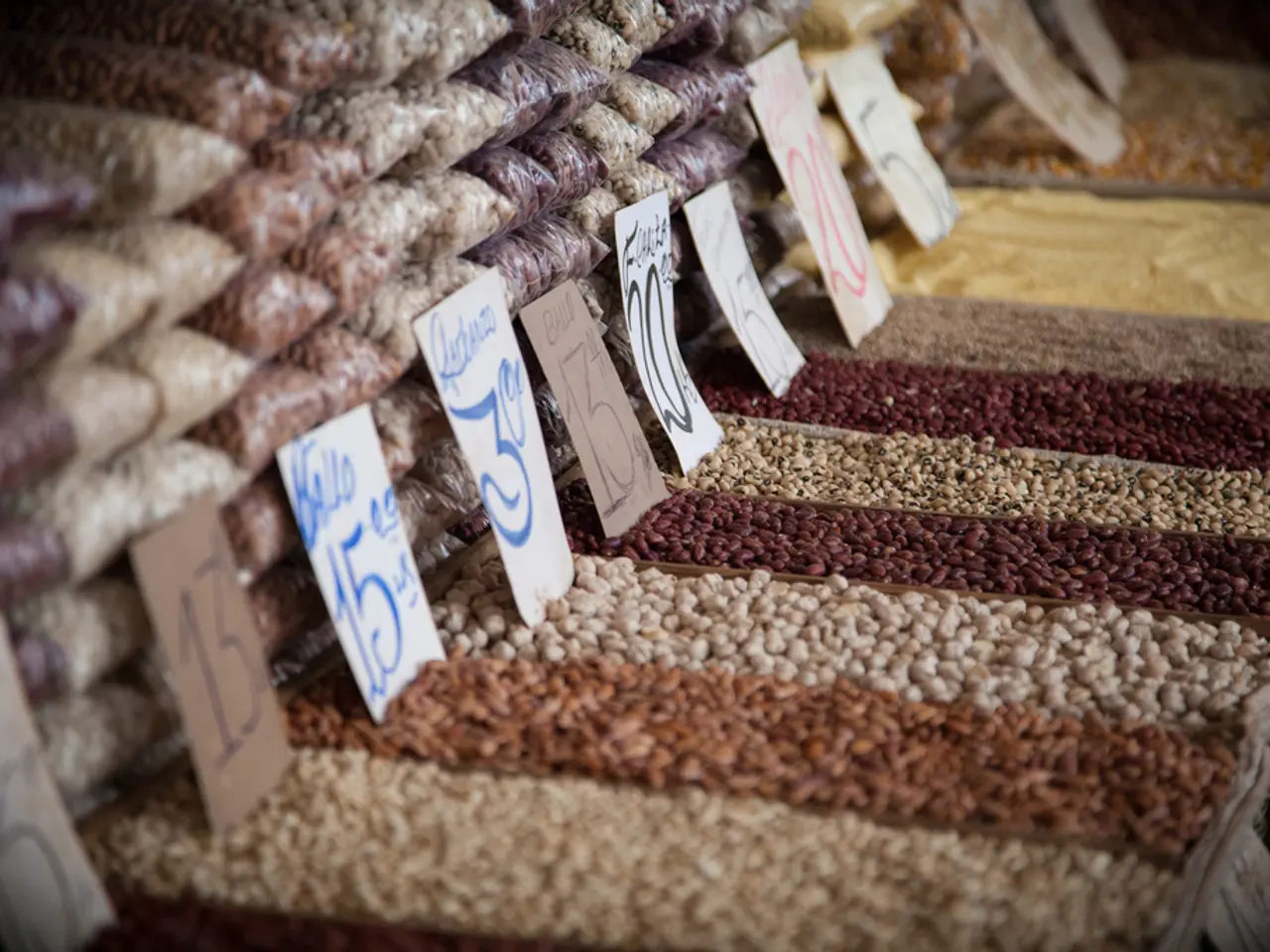Anticipate a harvest of 40 million metric tons of grains by farmers
In recent months, German farmers have been grappling with a series of challenges that have put a strain on the industry and the country's food supply.
The persistent dry weather from February to mid-May has presented major challenges, with unusually low moisture levels observed in the topsoil and sometimes deeper layers. This dry spell has affected nearly half of the total area dedicated to grain cultivation, which covers 5.86 million hectares, with the main type being winter wheat.
However, timely rain has arrived in many regions, benefiting grain formation and improving the prospects for the harvest. The EU is expecting a grain harvest of around 280 million tonnes, marking a ten percent increase from the small harvest in 2024.
Yet, the situation remains crucial for farmers in Germany, as they face "very tight" calculations due to continued high costs for fertilizer, energy, and plant protection products. The grain prices have reached a low point, adding to the financial strain.
One of the most pressing concerns for farmers is the Schilf-Glasflügelzikade (Glas-winged grasshopper), a planthopper species that poses a significant threat to German agriculture. This pest primarily impacts sugar beet crops, weakening plants through feeding activity and making them susceptible to disease.
As a vector for Sugar Beet Root disease (SBR), the Schilf-Glasflügelzikade can cause significant yield and quality losses, up to total failure in affected fields. Ongoing research efforts, such as the BEET-Protect project in Germany, aim to develop strategies to repel the Schilf-Glasflügelzikade and thereby protect sugar beet crops from both direct pest damage and secondary infection by SBR.
Farmers are particularly concerned about the increasingly widespread presence of the Schilf-Glasflügelzikade in potatoes, sugar beets, onions, red beet, and red cabbage. While direct quantitative data on the scale of yield and quality losses are not available, the pest’s dual role as a feeder and disease vector suggests its economic impact could be substantial, particularly in sugar beet cultivation.
For potatoes, sugar beets, maize (harvested in the fall), and further grass cuts on pastures as a basis for animal feed, the weather in the coming months will be crucial. The German Farmers' Association expects a rapeseed harvest roughly at last year's level, which is below the average of the past five years. However, they anticipate a grain harvest of around 40.1 million tonnes, slightly more than last year's 39 million tonnes.
Despite these challenges, the resilience of German farmers and ongoing research projects like BEET-Protect offer hope for a more secure and sustainable future for German agriculture.
Read also:
- Court petitions to reverse established decision on same-sex marriage legalization
- Chaotic rescue endeavors documented in emergency recordings and videos during the devastating Texas floods disaster
- Future Climate Scenarios in California Signal Increased Volatility with Atmospheric Rivers Playing a Prominent Part
- Intensified monsoon leads to heavy rainfall and flash flood warnings throughout Thailand








